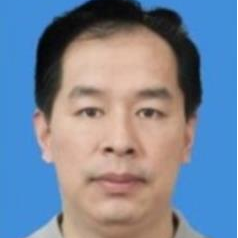Advances in Structural Health Monitoring for Infrastructures
A special issue of Materials (ISSN 1996-1944). This special issue belongs to the section "Advanced Materials Characterization".
Deadline for manuscript submissions: closed (20 September 2023) | Viewed by 4959
Special Issue Editors
Interests: structural health monitoring; structural damage identification; vibro-acoustics
Interests: structural health monitoring; structural damage identification; structural dynamics; vibro-acoustics
Special Issues, Collections and Topics in MDPI journals
Interests: structural health monitoring; probabilistic analysis; nonlinear vibrations; machine learning; earthquake engineering
Special Issues, Collections and Topics in MDPI journals
Interests: structural health monitoring; structural damage identification; smart materials and structures; applied soft computing; structural vibration and control
Special Issues, Collections and Topics in MDPI journals
Special Issue Information
Dear Colleagues,
A considerable amount of infrastructure has been constructed over the past few decades. Building materials of infrastructures could encounter degradation, corrosion, fatigue, etc., due to long-term services, as well as environmental and loading factors. Initial defects and damage could become more severe over time and threaten the safety and integrity of infrastructures. In this context, in-service infrastructures are anticipated to face a massive increase in demand for structural health monitoring (SHM) in the next decade. Advanced sensing networks and emerging technologies of big data and artificial intelligence have brought new opportunities and shown significant potential in the SHM field. Hence, it is of great significance to develop advanced sensing, processing, and evaluating technologies for SHM of infrastructures.
This Special Issue aims to collect papers that focus on all aspects of advances in SHM for infrastructures. The collections will be published after being peer-reviewed. The topics include but are not limited to:
- Structural health monitoring
- Structural damage identification
- SHM-oriented building materials
- Smart sensors
- In-suit/wireless/online sensing networks
- Big data/artificial intelligence technologies
- Modal analysis and signal processing
- Load identification and monitoring
- Structural model updating
- Vibration isolation and control
- Failure prognostics and early warning
- Structural health management
- Structural condition/integrity/safety assessment
Prof. Dr. Wei Xu
Prof. Dr. Rafal Burdzik
Dr. Mahmoud Bayat
Prof. Dr. Maosen Cao
Guest Editors
Dr. Nizar Faisal Alkayem
Guest Editor Assistant
Manuscript Submission Information
Manuscripts should be submitted online at www.mdpi.com by registering and logging in to this website. Once you are registered, click here to go to the submission form. Manuscripts can be submitted until the deadline. All submissions that pass pre-check are peer-reviewed. Accepted papers will be published continuously in the journal (as soon as accepted) and will be listed together on the special issue website. Research articles, review articles as well as short communications are invited. For planned papers, a title and short abstract (about 100 words) can be sent to the Editorial Office for announcement on this website.
Submitted manuscripts should not have been published previously, nor be under consideration for publication elsewhere (except conference proceedings papers). All manuscripts are thoroughly refereed through a single-blind peer-review process. A guide for authors and other relevant information for submission of manuscripts is available on the Instructions for Authors page. Materials is an international peer-reviewed open access semimonthly journal published by MDPI.
Please visit the Instructions for Authors page before submitting a manuscript. The Article Processing Charge (APC) for publication in this open access journal is 2600 CHF (Swiss Francs). Submitted papers should be well formatted and use good English. Authors may use MDPI's English editing service prior to publication or during author revisions.










